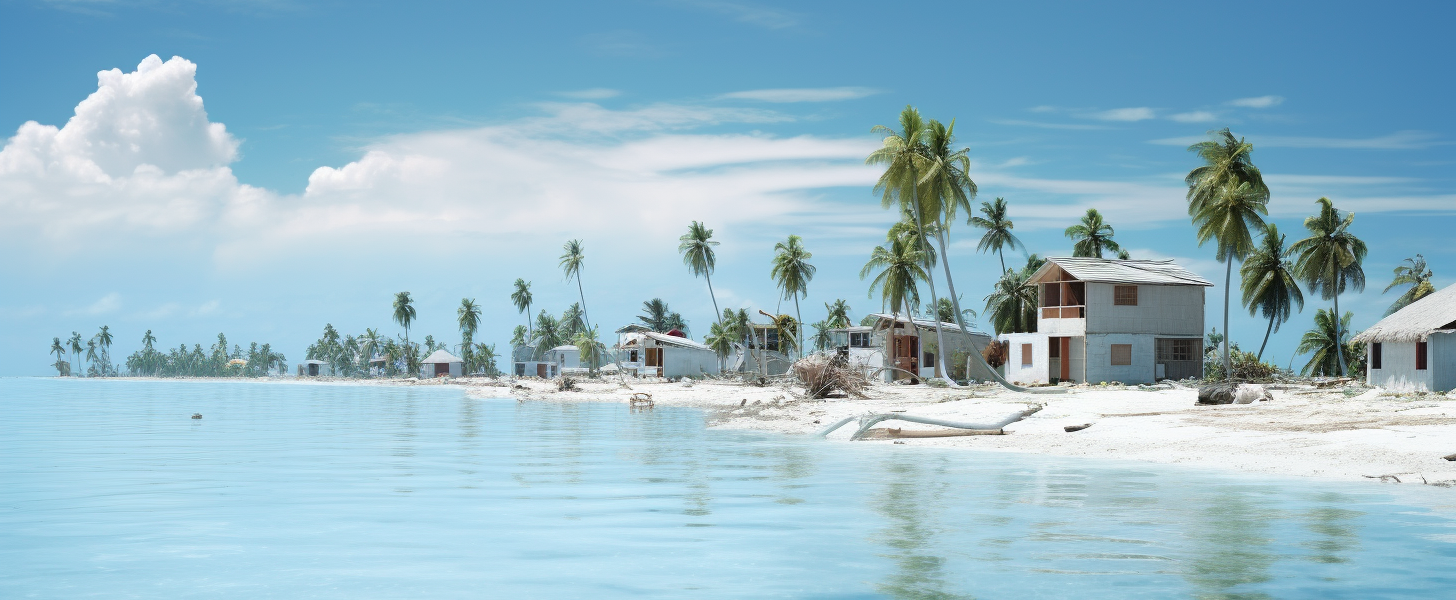The Maldives, an archipelago of over 1,100 coral islands in the Indian Ocean, is facing an existential threat due to climate change and rising sea levels. With 80% of the islands predicted to become uninhabitable by 2050, the Maldivian government is taking innovative measures to adapt and survive.
Coral Reefs: The First Line of Defense
Coral reefs play a crucial role in protecting the Maldives from rising sea levels. A healthy coral reef can absorb 97% of wave energy, significantly reducing erosion. However, the 2016 global coral bleaching event affected about 60% of the Maldives’ coral reefs, leaving the islands vulnerable to rising waters. To address this issue, the Maldives Coral Institute is working on rebuilding and protecting the reefs.
Artificial Islands and Floating Cities
The Maldives has already started constructing artificial islands to combat sea level rise. Hulhumale, a manmade island 6.5 feet above sea level, is more than double the height of Male, the current capital of the Maldives. This island, known as the City of Hope, could potentially serve as a relocation site for Maldivians affected by sea level rise.
In addition, the world’s first true floating city is set to begin construction and assembly in 2022, just a few miles from the capital city of Male. This innovative solution will not have to worry about sea level rise, as it will always be on top of the sea.
Global Advocacy and Leading by Example
Despite being a small island nation with negligible greenhouse gas emissions, the Maldives is committed to leading by example in the global effort to decrease emissions and prevent global warming. The Maldives has already phased out its chlorofluorocarbons 10 years before the deadline in the Montreal Protocol.
The Maldivian government is also advocating for more direct access to global climate funds to address urgent issues related to climate change. As a nation on the front lines of climate change, the Maldives is determined to adapt, survive, and inspire other countries to take action.
FAQ
Q: What is the main threat to the Maldives due to climate change?
A: The main threat to the Maldives due to climate change is rising sea levels, which could make 80% of the islands uninhabitable by 2050.
Q: How are coral reefs important for the Maldives?
A: Coral reefs serve as the first line of defense against rising sea levels, as they can absorb 97% of wave energy and reduce erosion.
Q: What are some innovative solutions the Maldives is implementing to combat climate change?
A: The Maldives is constructing artificial islands like Hulhumale and planning to build the world’s first true floating city to adapt to rising sea levels.
Q: How is the Maldives leading by example in the global effort to decrease emissions?
A: The Maldives has already phased out its chlorofluorocarbons 10 years before the deadline in the Montreal Protocol, showing that even small island nations can contribute to the reduction of greenhouse gases.
Glossary
– Coral bleaching: A phenomenon in which coral loses its color and becomes white due to stress, often caused by changes in temperature, light, or nutrients. Bleached coral is more susceptible to disease and death.
– Chlorofluorocarbons (CFCs): A class of chemicals that were widely used as refrigerants, propellants, and solvents but have been phased out due to their harmful effects on the ozone layer.
– Montreal Protocol: An international treaty designed to protect the ozone layer by phasing out the production of numerous substances responsible for ozone depletion, including chlorofluorocarbons (CFCs).




